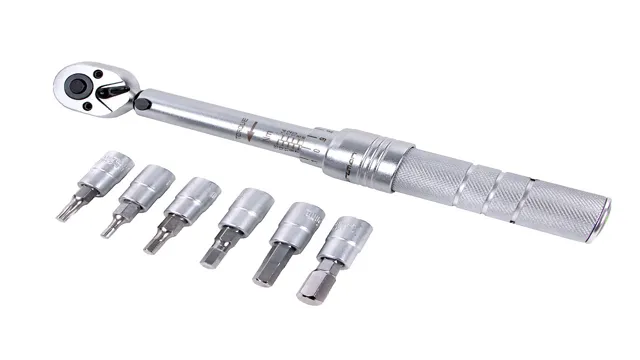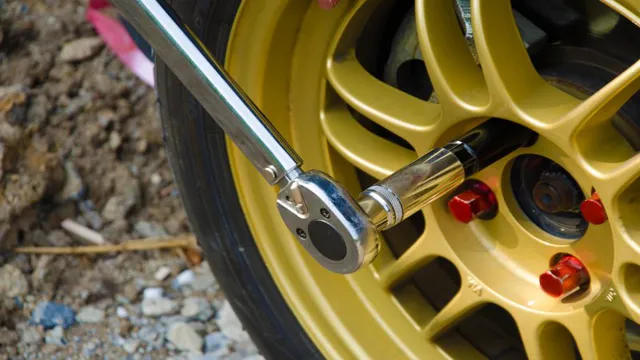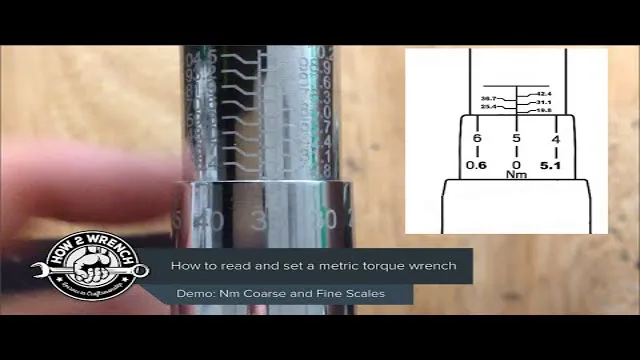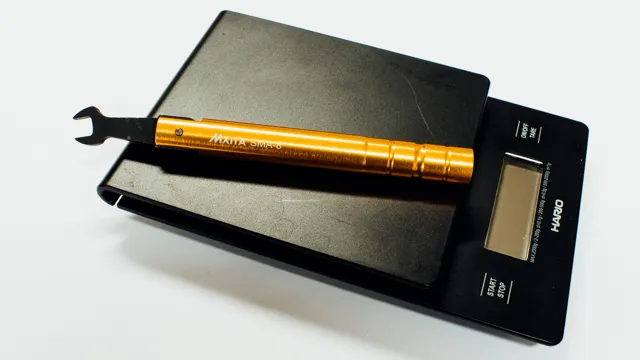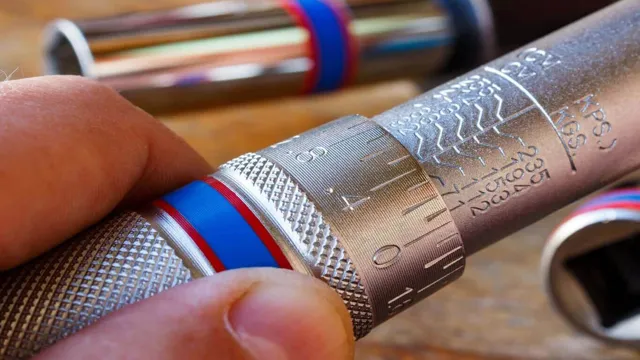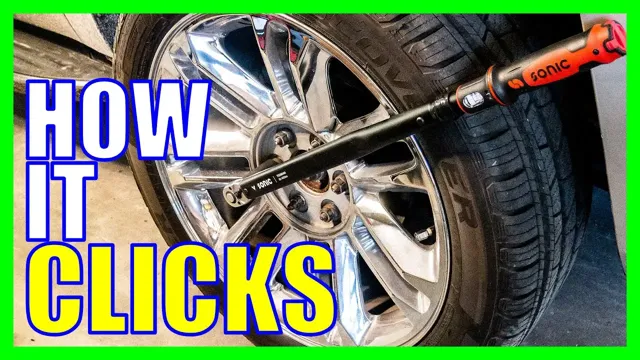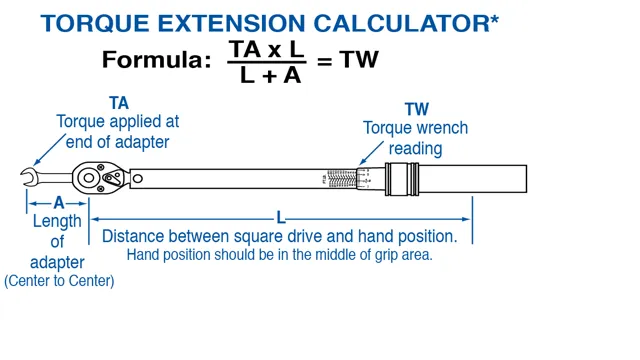How to Torque Without a Torque Wrench: Tips and Tricks for Accurate Tightening

Torquing without a torque wrench may sound like a daunting task for many, but it’s actually quite simple, and even experienced mechanics often find themselves in situations where they need a solution other than a torque wrench. Sometimes you won’t have a torque wrench on hand, or the range of torque required may be outside the limits of your torque wrench. Regardless of the situation, before starting a repair or installation, it’s crucial to know how to tighten nuts and bolts properly without a torque wrench to prevent damage or even catastrophic failure.
Think about it like cooking. You may have all the kitchen appliances and gadgets, but what happens when your oven breaks mid-cooking? You can still cook without an oven, albeit with a bit more effort and creativity. The same principle applies when it comes to torque wrenches.
You can certainly do the job without one, but it requires a few adjustments in your approach. In this article, we’re going to show you how to master the art of torquing without a torque wrench. Whether you’re a seasoned mechanic or a DIY enthusiast, these tips and tricks will come in handy when you need to tighten nuts and bolts correctly and efficiently.
So let’s dive in and discover the secrets of DIY torque mastery!
What is Torque?
Torque is the rotational force applied to a bolt or nut to tighten or loosen it. Typically, a torque wrench is used to achieve the recommended specifications for a specific application. But what if you don’t have a torque wrench on hand? There are a few methods you can use to apply torque without a torque wrench.
One option is to use a lug wrench or other tool that provides leverage to tighten the bolt as much as possible, then use your hand to tighten it a bit more, being careful not to overtighten and damage the bolt or thread. Another method is to use a calibrated gauge or reference tool to estimate the amount of torque being applied. However, it’s important to note that without a torque wrench, it’s harder to ensure accuracy and consistency, which can lead to problems down the line.
So if possible, it’s always best to use a torque wrench when applicable to ensure proper torque specs and avoid potential problems.
The Science Behind Torque
Torque is a measure of the twisting force that causes an object to rotate around an axis. This force is applied perpendicular to the object’s axis of rotation and is usually measured in Newton-meters (Nm) or foot-pounds (ft-lbs). The magnitude of torque depends on two factors: the force applied and the distance between the point where the force is applied and the axis of rotation.
In other words, the longer the lever arm, the greater the torque. Understanding torque is crucial in many different areas, from physics and engineering to sports and everyday life. For example, in automotive applications, torque is important because it determines the amount of power the engine can produce and how quickly the vehicle can accelerate.
In sports, the torque generated by a baseball pitcher’s arm can greatly affect the speed and movement of the ball. Overall, torque is a fundamental concept in mechanics and physics, and its applications are diverse and far-reaching. Whether you’re building a bridge, designing a motor, or simply throwing a ball, understanding the science behind torque can help you achieve the best results.
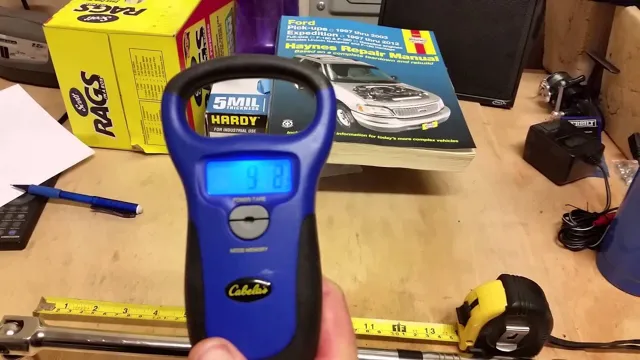
Why Use a Torque Wrench?
While a torque wrench is an essential tool for precise torque measurements, there may be situations where one is not available. In those cases, you can still achieve the desired level of torque by using a few tricks. One way is to use a regular wrench and judiciously apply math skills to add the required angle.
For example, if you’re working on a car and the manufacturer indicates a torque of 50 lb-ft and an additional 90-degree turn, apply the 50 lb-ft, and then imagine the angle like a clock. Turn it an additional quarter-way, which should correspond to about a 90-degree turn. Alternatively, you could also use your bodyweight and estimate the amount of force required by placing one foot on the wrench and leaning into it.
However, be careful not to exceed the recommended torque limit as it can lead to damage and safety risks. Remember that while a torque wrench may not always be available, it is still the most reliable tool for accurate torque measurements.
The Importance of Accurate Torque Settings
Using a torque wrench is an essential part of any DIYer’s toolbox. It ensures that bolts are tightened to the proper specifications, which reduces the chances of accidents or damage to equipment caused by over-tightened or under-tightened bolts. The torque settings are given by the manufacturer in the vehicle or equipment’s manual, and following them guarantees that everything works as it should.
Inaccurate torque settings can cause serious issues like broken bolts or stripped threads. Investing in a good torque wrench will save both time and money in the long run, as it’ll prevent errors that could lead to costly repairs or replacements. Bottom line: don’t skip on using a torque wrench, it’s imperative for proper machinery function and safety.
Alternative Methods to Torque Without a Wrench
If you don’t have a torque wrench or need a more hands-on approach to torquing, there are a few alternative methods to consider. One is the “judge by feel” method, where you use your senses to determine the tightness of the bolt. This can be risky as over-tightening can damage the equipment, but with practice, you can develop a feel for the right amount of tension.
Another method is the “mark and turn” technique, where you mark the bolt and the nut with a pen or marker and then turn the nut a set number of degrees based on the bolt’s diameter and thread pitch. This method requires more math and precision, but can be effective if executed correctly. Finally, you can use a torque multiplier, which is a tool that amplifies the force you apply to the nut or bolt to produce the required torque.
While these methods aren’t as accurate as a torque wrench, they can be helpful in a pinch or if you don’t have access to one. However, it’s important to keep in mind that torqueing too tightly or too loosely can lead to equipment damage or potential safety hazards.
Angle-Tightening Method
When it comes to working with fasteners, torque wrenches are essential tools for ensuring proper tightness and preventing damage or failure. However, there are situations where a torque wrench may not be available or practical. In those cases, one alternative is the angle-tightening method.
This method involves tightening the fastener to a specific degree of rotation, rather than a specific torque value. It relies on the fact that bolt stretch is directly proportional to the angle of rotation, so a consistent angle will result in consistent tension. While it may not be as precise as a torque wrench, it can be effective for many applications.
However, it requires a bit of math and accurate measurement tools to determine the desired angle. Angle-tightening is especially useful for situations where access is limited, as it does not require the same space as a torque wrench. Whether using a torque wrench or an angle-tightening method, it is crucial to follow manufacturer specifications to ensure proper assembly and avoid costly mistakes.
Marking Method
When it comes to tightening bolts and nuts, we often turn to torque wrenches for precise measurements. But what if you don’t have one? Fortunately, there are alternative methods to torque without a wrench. One method is using a torque marking system.
This involves marking the bolt or nut with paint or a permanent marker before tightening. Once you feel resistance, stop tightening and mark the position of the bolt or nut again. Continue tightening until the marks align, and you have reached the desired torque.
While not as precise as a torque wrench, this method is great for simple tasks and emergencies. Just be sure to use a high-quality marker or paint, so the marks don’t fade or rub off quickly.
Clicking Method
The clicking method is a popular alternative to using a torque wrench when tightening bolts. It involves using a click-type torque wrench, which produces an audible click when the predetermined torque setting is reached. Another option is a preset torque screwdriver, which also clicks when the desired torque is achieved.
However, it’s important to note that these methods may not be as accurate as using a traditional torque wrench, and may not be suitable for all applications. It’s important to follow manufacturer’s guidelines and specifications, and to use caution when relying on alternative torque methods. While the clicking method can be a useful tool in certain circumstances, it’s essential to ensure that proper torque values are being achieved to prevent failure or damage to the equipment.
Stretch Method
When it comes to tightening bolts and nuts, many people rely on torque wrenches to get the job done. However, not everyone has access to a wrench or may prefer a different method. One alternative method to torque without a wrench is the stretch method.
This method involves tightening the bolt or nut to a specific level by stretching the bolt or stud. The amount of stretch needed can be determined by referring to a stretch chart for the specific bolt or by measuring the bolt’s original length and the length after tightening. While this method may not be as precise as using a torque wrench, it can still be effective when done correctly.
It’s important to note that the stretch method should only be used on bolts or studs specifically designed for this method and that overtightening can lead to bolt failure. By understanding the stretch method and using it correctly, you can successfully tighten bolts without a torque wrench.
Tips for Achieving Accurate Torque
Achieving accurate torque is crucial in a variety of tasks, from automotive repairs to heavy machinery maintenance. While a torque wrench is a preferred tool for ensuring precise torque, it is not always necessary. One effective technique is to use a torque angle gauge in conjunction with a standard wrench.
This method involves tightening the bolt to a specified torque, then using the gauge to measure the rotation angle while continuing to tighten the bolt until the desired angle is reached. Another useful tip is to use a calibrated arm and a weight to apply the necessary force to achieve the required torque. By using a specific formula, the weight and arm length can be adjusted to provide a consistent and accurate torque.
It is important to remember that torque specifications vary depending on the application, so always refer to the manufacturer’s guidelines for the specific torque requirements. With these techniques, achieving accurate torque without a torque wrench is possible, but always exercise caution and follow safety procedures to avoid injuries and damage to equipment.
Using a Torque-Accuracy Checker
If you want to achieve accurate torque in your mechanical processes, using a torque-accuracy checker can be a valuable tool. With this device, you can measure the amount of torque being applied to a nut or bolt and ensure that it matches the specifications required for your project. To get the most accurate results, there are some tips that can help.
Firstly, make sure your checker is calibrated properly before use to ensure accurate readings. Secondly, ensure that you are using the correct adapter for your test sample and that it is properly mounted. Lastly, ensure that the device is set to the correct torque range for your project.
By following these tips and incorporating the use of a torque-accuracy checker, you can ensure precise and efficient results in your mechanical processes.
Testing and Re-Torquing
Testing, Retorquing, Tips, Accurate Torque Testing and re-torquing are essential steps in ensuring the safety and longevity of mechanical components. One of the most crucial factors to consider during these processes is the accuracy of torque. Over-tightening or under-tightening can cause serious damage to the components, leading to critical failure or excessive wear and tear.
To achieve accurate torque, there are a few tips to keep in mind. Firstly, use a calibrated torque wrench that is appropriate for the application. Secondly, ensure that the threads of the fasteners are clean and free of debris before tightening.
Lastly, it is recommended to perform the torquing process in stages, gradually increasing the torque to the desired value, as this allows the fasteners to distribute the load evenly. Once the initial torquing is done, it is crucial to re-torque after a certain amount of usage/time has elapsed to ensure that the torque is still accurate and no components have loosened. By following these tips, you can achieve accurate torque and ensure the safety and longevity of your mechanical components.
Conclusion
If you find yourself in a situation where you need to torque something but don’t have a torque wrench, have no fear! With a little creativity and know-how, you can still achieve the desired torque. Think of it like cooking without a recipe – you may not have precise measurements, but you can still end up with a delicious (or tightly fastened) result. So grab a breaker bar, a torque chart, and your best estimation skills, and torque away like a pro (just remember to double-check and tighten if necessary).
Who needs a torque wrench anyway?”
FAQs
Is it possible to torque without a torque wrench?
While it is preferable to use a torque wrench, it is possible to estimate torque by using a torque angle method or by using a torque chart.
What is the torque angle method?
The torque angle method involves tightening a bolt to a specified torque and then turning it a set number of degrees further to achieve the desired torque. This method requires a degree wheel and a protractor.
Can I use a torque chart to estimate torque?
Yes, a torque chart will provide you with the recommended torque for a given bolt size, thread pitch, and material.
Can I use a torque app on my smartphone?
Yes, there are several torque apps available that use your phone’s built-in accelerometer to estimate torque.
What are some common mistakes when torquing without a torque wrench?
Common mistakes include guessing torque, over-tightening or under-tightening, and using the wrong lubricant.
What is the importance of torquing bolts correctly?
Correct torque ensures that bolts are not too loose or too tight, which can lead to failure or damage to the bolt, thread, or material being fastened.
Are there any tips for estimating torque without a torque wrench?
Some tips include using a consistent method, checking the bolt and material specs, and double-checking your work with a calibrated torque wrench.

